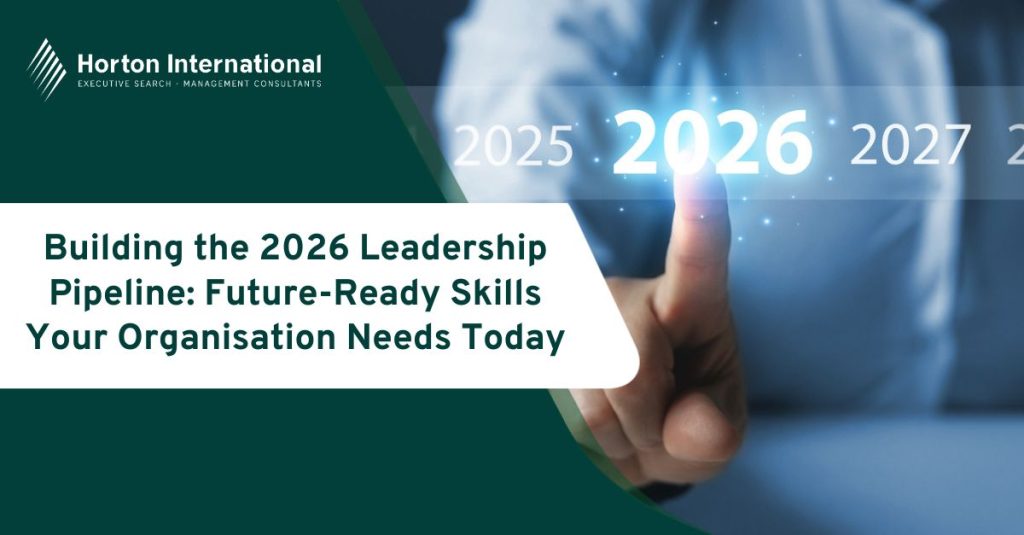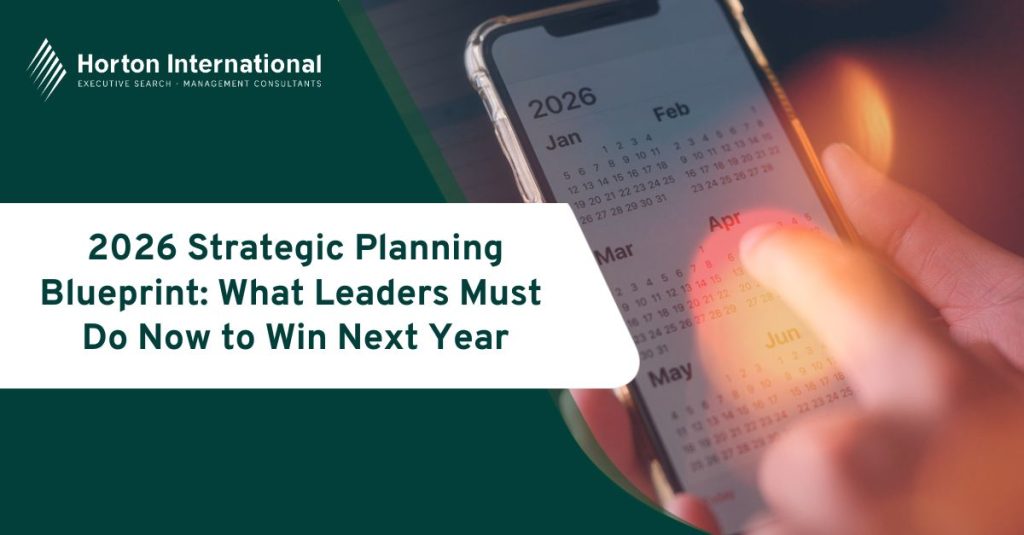Your most promising high-potential employee; brilliant, tech-savvy, and culturally aware, just refused a promotion to senior management. “I don’t want to become like the leaders I see,” she says. “I want to make an impact, not just manage people.”
Think it couldn’t happen to your business?
- 78% of Gen Z workers plan to leave their jobs within the year, and only 6% aspire to traditional leadership roles1
- Gen Z makes up 27% of the global workforce in 2025 and is positioned to become the dominant working generation within a decade.
This rejection of conventional leadership could hollow out the talent pipeline of many major corporations. Organisations that fail to adapt ,risk not just talent exodus, but complete institutional breakdown as retiring Baby Boomers and Gen X leaders find no successors willing to fill their roles.
For senior management and HR professionals, the mathematics are stark: evolve your approach to authentic leadership and leadership development, or watch your competitive advantage drain away with your departing talent.
The Great Leadership Expectation Divide
This generational divide manifests most clearly in leadership expectations. Older generations frequently equate work with self-worth and respond to title, prestige, and hierarchical recognition. Gen Z seeks purpose-driven roles with transparent, supportive leadership.
The implications for executive search and leadership recruitment are profound. E.ON’s recent recognition as the Best Place to Work for 16 to 34-year-olds demonstrates that successful organisations are those that have fundamentally restructured their approach to leadership engagement.2
This shift challenges traditional talent management approaches. Where previous generations might have been motivated by climbing hierarchical ladders, Gen Z workers are more likely to seek roles where they can make immediate impact, regardless of formal authority levels.
Understanding Gen Z Leadership Preferences
Generation Z brings distinct characteristics that reshape leadership effectiveness. As complete digital natives who came of age during social media proliferation, the COVID-19 pandemic, and heightened social justice awareness, they are the most self-aware, inclusive, and tech-savvy generation in history. However, this same generation also exhibits higher anxiety levels and different communication preferences.
Gen Z leadership expectations include:
- Immediate Feedback and Recognition: Unlike Baby Boomers who function well with minimal feedback, Gen Z requires regular, constructive engagement
- Transparent Communication: They expect honesty about organisational challenges, decision-making processes, and career progression
- Social Justice Alignment: Corporate values must be authentically lived, not merely marketed
- Mental Health Support: They openly advocate for psychological wellbeing and expect organisational support
- Flexible Authority Structures: They respond better to collaborative leadership than traditional top-down management.
Clearly, these preferences conflict with hierarchical structures where information flows downward and authority is exercised through position rather than influence. The result is a multigenerational workforce challenge that requires sophisticated organisational change management.
The Leadership Pipeline Crisis
The challenge is compounded by demographic realities; Generation Z contains three million fewer people than the Millennial generation, and Generation Alpha is expected to be smaller still.
The solution lies in reimagining leadership structures. Flatter organisational hierarchies, distributed leadership approaches, and roles that emphasise impact over authority will all help.
Implementation Framework: Building Authentic Leadership Infrastructure
Successful transformation requires a systematic approach that addresses structural, cultural, and developmental elements simultaneously.
Phase 1: Structural Redesign (Months 1-6)
- Flatten hierarchical structures by reducing management layers and creating cross-functional project teams with distributed leadership.
- Redesign role descriptions to emphasise impact metrics.
- Implement transparent decision-making processes including diverse generational perspectives in strategic discussions.
Phase 2: Cultural Transformation (Months 3-12)
- Establish communication protocols through regular town halls, open-door policies, and reverse mentoring programmes.
- Create psychological safety frameworks that encourage honest feedback across generational lines.
- Integrate purpose-driven messaging that connects individual roles to broader organisational mission.
Phase 3: Leadership Development Evolution (Months 6-18)
- Implement flexible progression pathways that allow advancement based on expertise and impact rather than tenure.
- Develop continuous learning programmes addressing both technical skills and emotional intelligence.
- Create executive coaching initiatives focused on multigenerational leadership effectiveness.
Phase 4: Measurement and Refinement (Ongoing)
- Establish authentic leadership metrics: employee engagement scores; retention rates across generations; internal mobility patterns.
- Monitor succession pipeline health and adjust strategies based on emerging generational preferences and business requirements.
Managing Multigenerational Leadership Dynamics
Successfully managing a multigenerational workforce means understanding that generational differences, whilst sometimes overstated, do create real communication and expectation challenges.
Effective strategies include:
- Reverse Mentoring Programmes: Pairing senior leaders with younger employees to share technological insights and contemporary perspectives
- Cross-generational Project Teams: Creating opportunities for different generations to collaborate on shared objectives
- Communication Protocol Development: Establishing team agreements about communication preferences and methods
- Inclusive Leadership Training: Developing managers who can effectively engage employees across generational lines
- Psychological Safety Initiatives: Creating environments where different generational perspectives can be shared without judgment
The research is clear: teams with high psychological safety and inclusive environments perform up to 30% better than those without.2 For organisations managing multiple generations, this translates directly to competitive advantage.
Corporate Culture Transformation Through Authentic Leadership
The shift toward authentic leadership represents more than policy changes. Transformation must address both structural and cultural elements that have traditionally defined organisational success.
Risk Mitigation: The Cost of Inaction vs. Transformation
Organisations face a critical decision point where inaction carries greater financial and strategic risks than proactive adaptation.
Quantifiable Risks of Resistance
Talent exodus costs are immediate and measurable. With 78% of Gen Z workers actively seeking new employment and replacement costs ranging from 50% to 200% of annual salary for skilled positions, organisations refusing to adapt face recurring recruitment expenses that can devastate operational budgets. The indirect costs: project delays, knowledge loss, and reduced team morale, often exceed direct replacement costs.
Leadership pipeline collapse presents an existential threat. As Baby Boomers retire and Gen X approaches senior career stages, the reality is stark: insufficient leadership succession creates operational continuity risks that can trigger stakeholder confidence issues, strategic planning disruptions, and competitive disadvantage.
Cultural misalignment with evolving market expectations affects not only employee engagement but customer relationships. Gen Z’s influence extends beyond internal operations to consumer preferences, with 73% of global consumers willing to pay more for products from companies committed to positive social and environmental impact.4
Strategic Risk Mitigation Approaches
Gradual transformation strategies allow organisations to pilot authentic leadership approaches in specific departments or regions, measuring effectiveness before broader implementation. This reduces organisational disruption whilst building evidence base for systematic change.
Succession planning diversification involves developing multiple leadership pathways that accommodate different generational preferences, ensuring organisational continuity regardless of individual leader preferences.
The demographic reality makes this evolution inevitable; organisations can either lead this transformation or be forced into reactive changes when talent scarcity reaches crisis levels.
Conclusion: Embracing the Leadership Evolution
The authenticity imperative represents both the greatest challenge and the most significant opportunity facing contemporary organisations. Generation Z’s demand for genuine, purpose-driven leadership is not a temporary trend but a profound redefinition of the future of work.
For senior management and HR professionals, choice is limited: evolve leadership approaches to embrace authenticity, transparency, and purpose-driven engagement, or risk losing access to the talent that will drive future organisational success. Demographic realities make this evolution not just preferable, but essential.
Sources
[1] https://www.deloitte.com/global/en/issues/work/genz-millennial-survey.html
[2] https://www.hrgrapevine.com/content/article/2025-07-17-how-e-on-engaged-gen-z-by-listening-to-what-they-want
[3] https://hbr.org/2023/01/bridging-generational-divides-in-your-workplace
[4] https://www.inc.com/melanie-curtin/73-percent-of-millennials-are-willing-to-spend-more-money-on-this-1-type-of-product.html/






